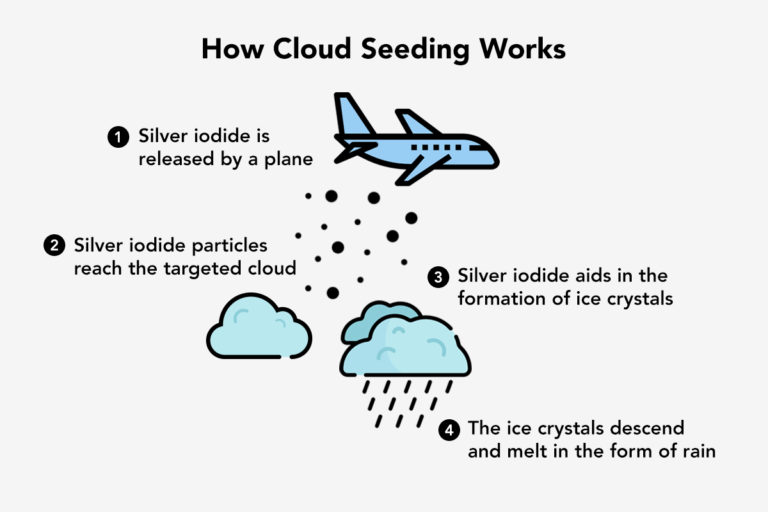Clouds are made up of tiny water droplets called cloud droplets. Groups of cloud droplets form water vapour (gas) or ice crystals.
Water vapour isn’t dense enough to fall to the ground as precipitation. Instead, it rises into the sky and becomes supercooled. Eventually, it condenses (turns to a liquid) around tiny particles of dust in the sky. These tiny particles are called condensation nuclei. It takes billions of these condensed water droplets to form a visible cloud.
When the water molecules are spread out, they aren’t dense enough to feel Earth’s gravity. When the molecules huddle together, they form larger, heavier droplets. Eventually, they become heavy enough to fall to the ground as precipitation.
Cloud seeding involves modifying a cloud’s structure to increase the chance of precipitation. Cloud seeding adds small, ice-like particles to clouds. Usually, silver iodide particles are used.
These particles act as additional condensation nuclei. Unattached supercooled water vapour molecules in the clouds condense around these particles. Then, the condensed water vapour droplets group together. This process continues until the droplets are large enough to fall like rain!
There are two ways of adding particles to clouds:
Using large cannons that shoot particles into the sky.
Using Airplanes/Drones that drop the particles from above.

Comments
Post a Comment